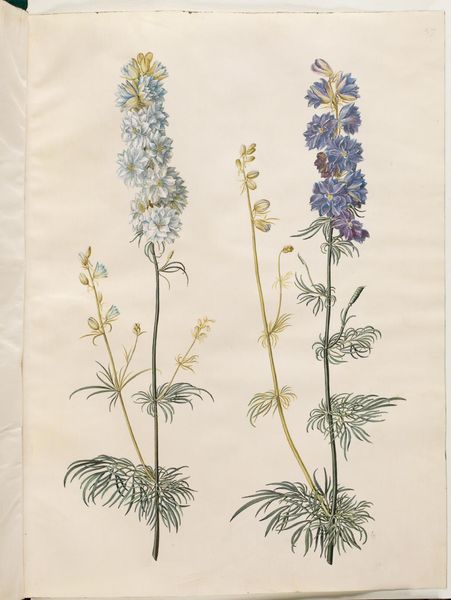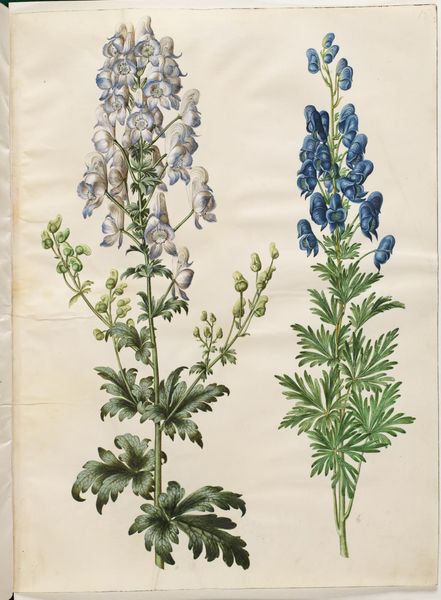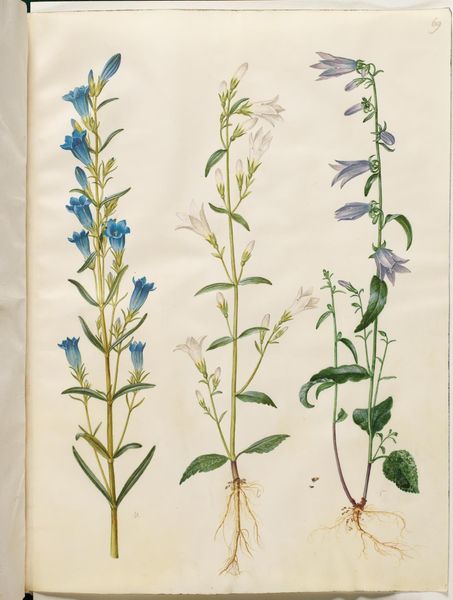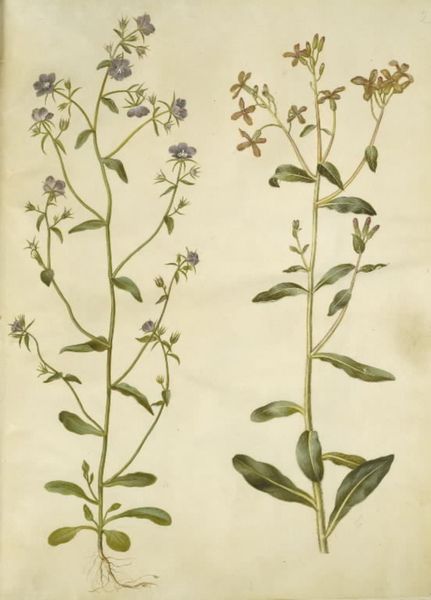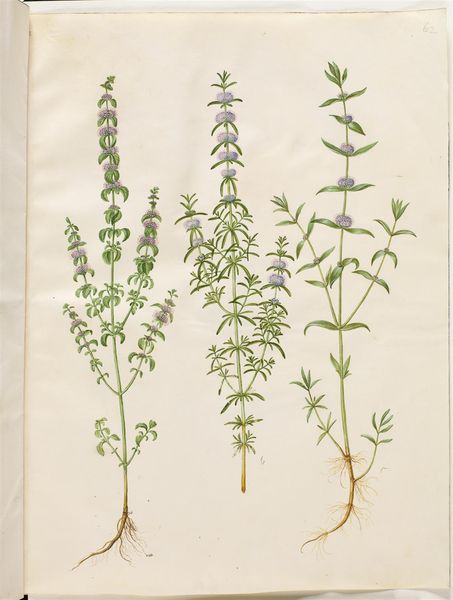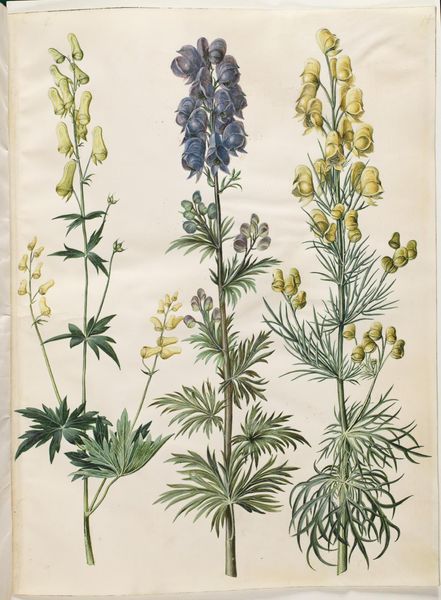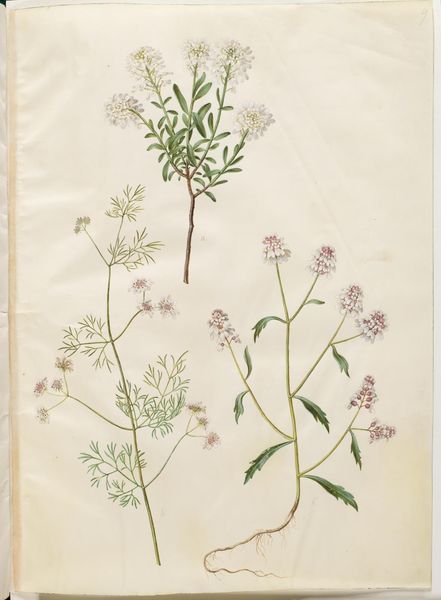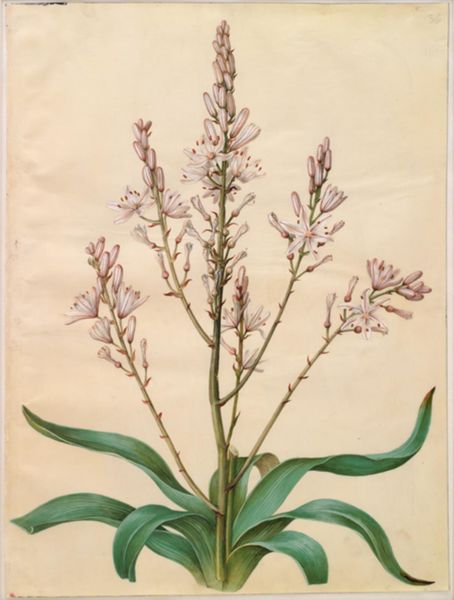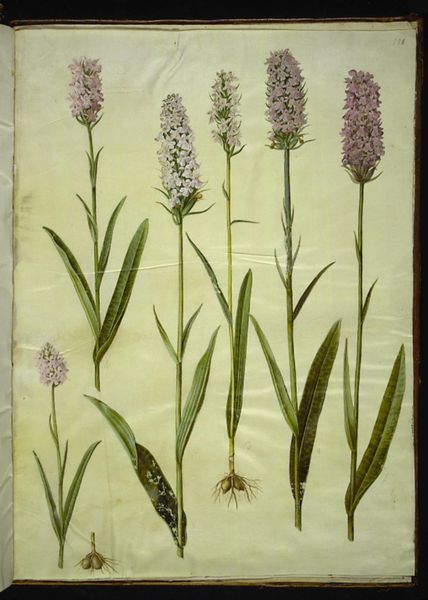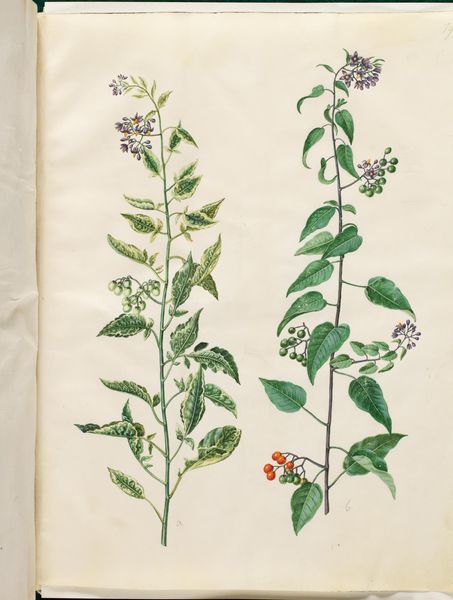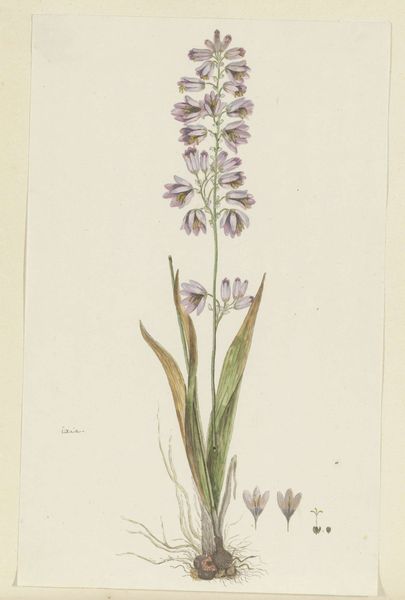
Campanula persicifolia (smalbladet klokke); Campanula pyramidalis (pyramide-klokke); Anthericum ramosum (grenet edderkopurt) 1649 - 1659
0:00
0:00
drawing, gouache, watercolor
#
drawing
#
gouache
#
11_renaissance
#
watercolor
#
watercolour illustration
#
botanical art
#
watercolor
Dimensions: 505 mm (height) x 385 mm (width) (bladmaal)
Editor: Here we have Hans Simon Holtzbecker’s botanical drawing, "Campanula persicifolia (smalbladet klokke); Campanula pyramidalis (pyramide-klokke); Anthericum ramosum (grenet edderkopurt)", dating from between 1649 and 1659. It’s a detailed rendering in watercolor and gouache, and seeing them laid out so starkly, the bellflower family specifically, gives it such an austere beauty. What strikes you as you observe this piece? Curator: The immediate clarity speaks of Holtzbecker's intense observation, but it’s the deeper symbolism embedded in botanical art of this period that captivates me. Think of each plant as carrying cultural weight. Bellflowers, for instance, were often associated with steadfastness. This cultural memory, where nature acts as a vessel for emotional qualities, creates a profound layer. Editor: So the choice of specific plants isn’t arbitrary? Curator: Precisely! Each blossom becomes a carefully chosen word in a visual language. What does the pyramidal bellflower *mean* to Holtzbecker, or his patron? Was it merely a scientific exercise, or did it represent something more personal, perhaps aspirations towards heaven or the divine? What do you perceive about the choice to render the root system? Editor: It’s unusual and makes me think about grounding, and origins. I hadn’t considered that this could be more than just documentation, but now I wonder about the artist's intentions – how much of himself is present in these choices? Curator: Holtzbecker’s work gives a chance to peel back the layers of symbolic meaning carried by something as seemingly simple as a flower. It reminds us that images carry profound emotional, cultural, and psychological resonances across time. Editor: This has opened my eyes to looking at even the simplest subjects with more historical and symbolic awareness. I'll never see a botanical illustration the same way again!
Comments
No comments
Be the first to comment and join the conversation on the ultimate creative platform.
